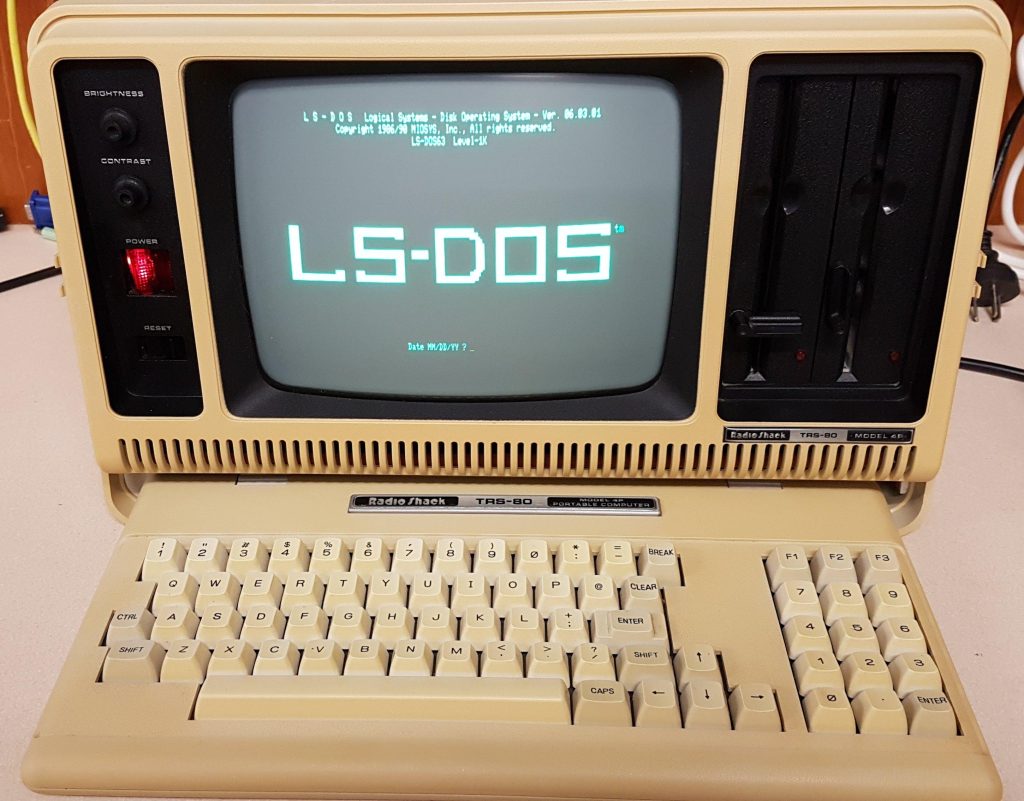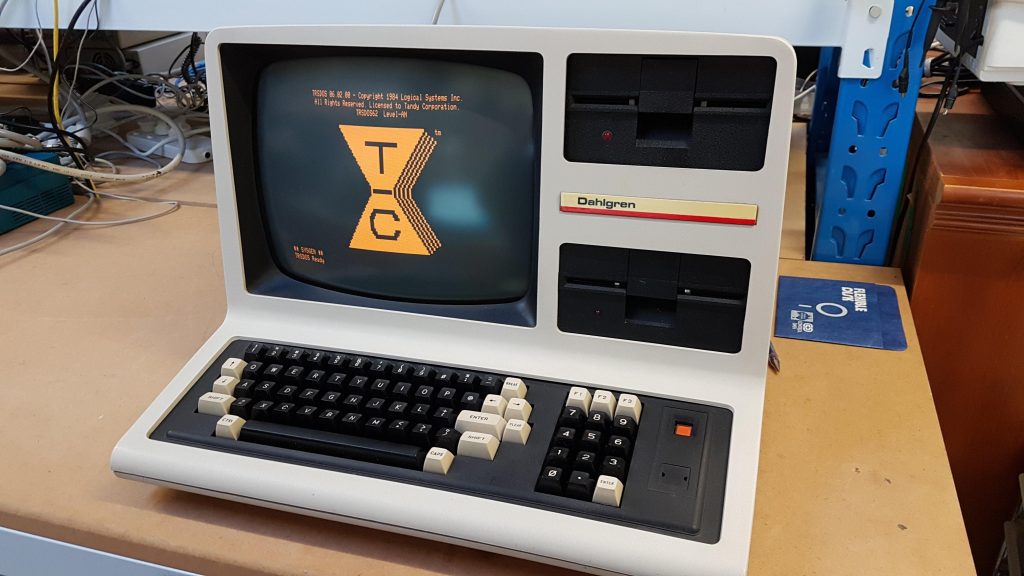The system did not come with a floppy disk drive. I did my set-to work using a Dick Smith drive from my System 80 and my generic drive unit.
Ben G from the Australian Vintage Computer Collectors had a genuine one, though, which he passed on at very reasonable cost (not the first time he’s helped me out).
I made up a new cable, as I’d been using the System 80 cable. The Tandy cables used connector pin removal to set the drive numbers – all the selects are connected inside the drives. I really need to pull some pins from the connector but for the short term I taped over DS1 (p12), DS2 (P14), and DS3 (p32) leaving just DS0 (p10) on the drive connector for the Tandy floppy drive.
As is often the case with 40-year-old drives, it did not immediately work. I did the usual clean up, lubrication, and alignment (using Imagedisk) but it had a peculiar issue of losing half the head steps. This turned out to be a timing problem with two monostables that control the stepper motor. One had an adjustment pot, but I had to change the resistor on the other one.
Apparently i couldn’t find a schematic.


Once the timing issue was resolved, the drive could be aligned. Adjustment is by loosening the motor screws and rotating the motor body, but it didn’t have enough play, so i had to move the shaft coupling a little as well.


I found the cable unreliable and after several frustrating hours of checking and rechecking I found that the floppy drive connector on the expansion box had been ever so slightly modified. One side had been filed down – presumably to accommodate a tight floppy cable connector.
The connectors I used on my new cable were just a little wider, so it was possible to be out by half to one pin, resulting in shorts/opens. I need to build up the connector again, but it works fine as long as you know and position correctly!









